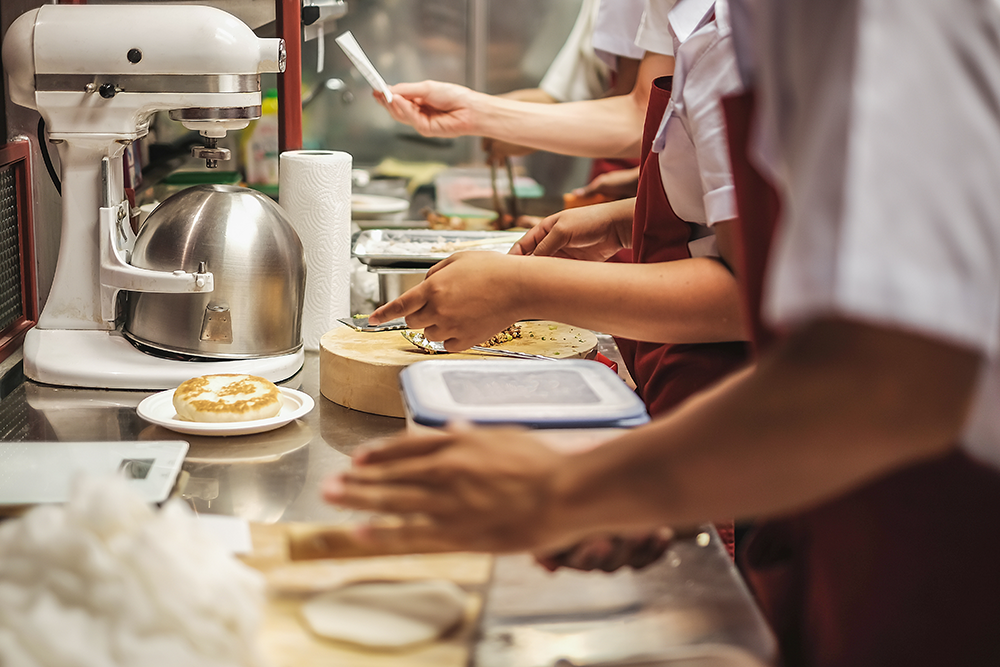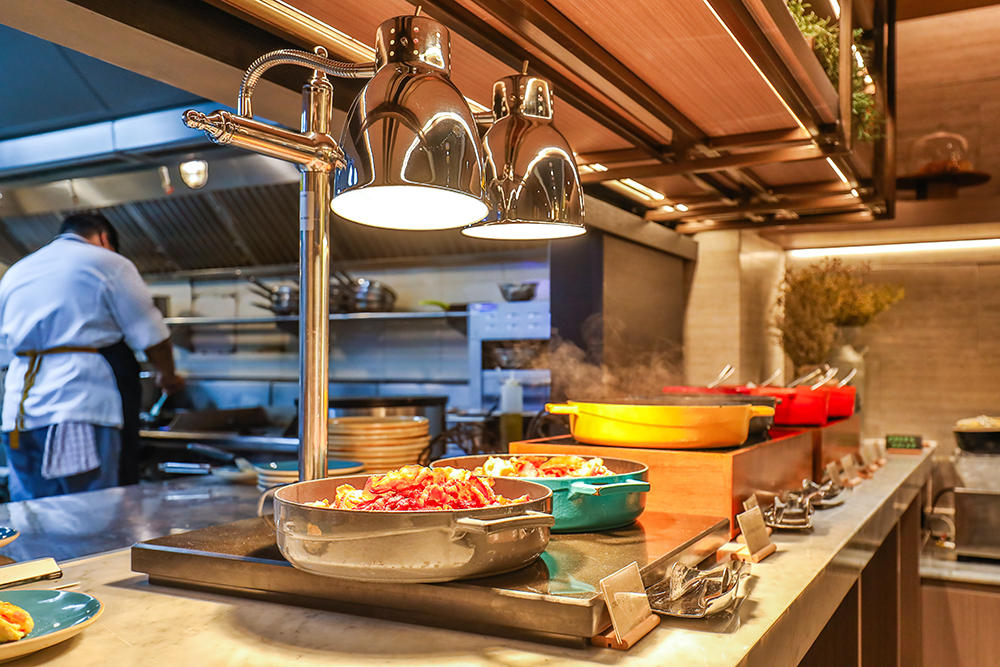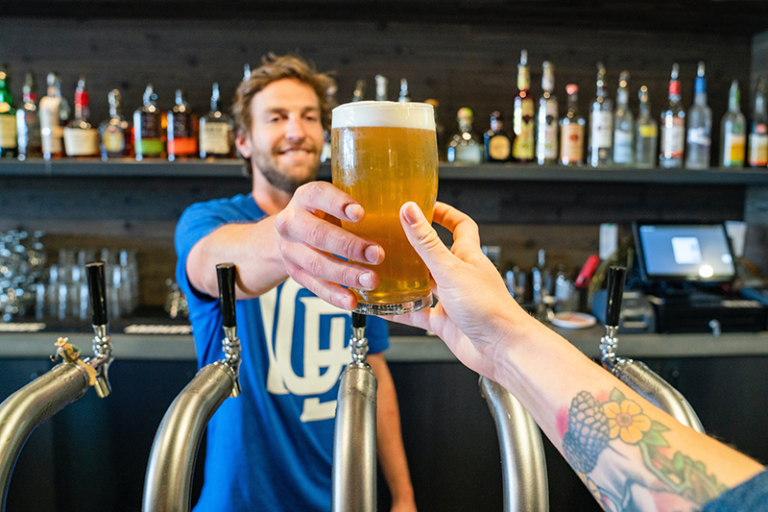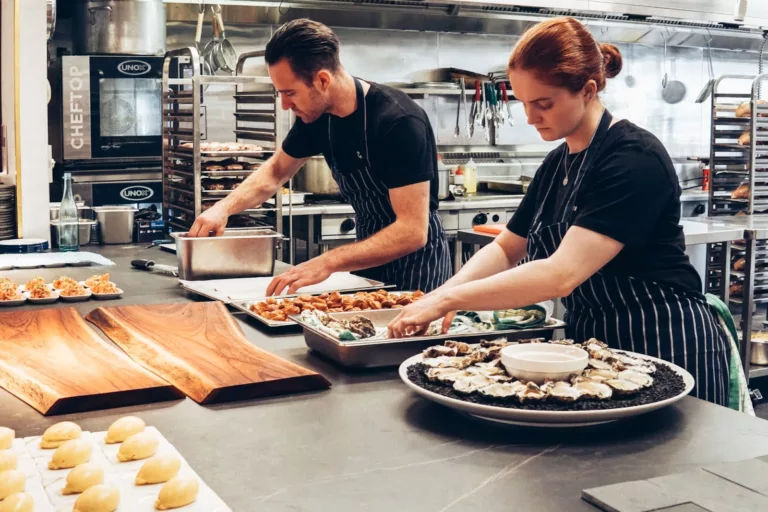Your Guide to Controlling Restaurant Margins During Inflation

If your restaurant’s profit margins are feeling the pinch more than usual, you’re not alone.
As we step into 2024, inflation remains a top concern for restaurant owners across the country.
But don’t worry, we’re here to help. With a few practical strategies, you can protect your margins and set the stage for a successful 2024.
As experienced restaurant accountants, we’re sharing our recommendations on smart menu pricing, cost management, and a few operational adjustments that can make a big impact.
Let’s dive in.
Quick Points to Remember
- Restaurants have to be flexible with pricing. This means understanding the profitability of each dish, making careful price changes, and promoting value deals like daily specials to stay profitable even when food costs are on the rise.
- To keep costs in check, you’ve got to streamline operations. This includes efficient inventory management, smart staff allocation, and integrating tech to improve efficiency and cut costs.
- Thinking long-term can bring in savings. This means investing in energy-efficient equipment, looking for ways to save costs, and planning for future growth and market trends.
Let’s Talk Menu Pricing
First things first, let’s talk pricing.
Understanding the profitability of each dish will help you figure out the real cost and profitability of each dish. Incremental price changes can soften the blow of price hikes for your customers. And promoting value deals, like daily specials or combo deals, can attract price-conscious customers and keep your sales volume steady.
Let’s dive deeper into each of these strategies.
Dish Profitability: Your Secret Weapon
Understanding the profitability of each dish is your secret weapon against rising costs. We’ve spoken about this topic in depth in a previous blog, but investing in a tool like MarginEdge is a great first step.
With an inventory tracking tool like MarginEdge, you can keep track of the cost of every ingredient in every recipe. That way, you can figure out the actual food cost of a dish, which is crucial for understanding your profit margins.
Here’s a quick way to find your most profitable menu items:
- Calculate the food cost percentage of each item
- Look at the sales data and popularity of each item
- Promote the most profitable menu items to increase sales
With this information, you can make informed decisions about menu design, pricing, and strategic adjustments to maximize profitability.
That customer favorite might not be such a money maker after all.
Making Incremental Price Changes
Now that you know your most profitable dishes, it’s time to face the tricky task of raising prices. But don’t worry – we’re not suggesting big jumps.
Instead, consider making gradual and industry trend-aligned price changes. Hint: What are your competitors doing?
This strategy can help maintain customer satisfaction and save money in the process. It’s important to review and adjust your menu prices regularly, ideally every month, or at least every four months.
But we get it: the challenging part is communicating these price changes to your customers.
You need to strike a balance here.
Give your customers advance notice, explain why you’re adjusting the prices, and highlight the value they’re getting. A well-planned, menu-wide price increase can minimize the impact on customers and reduce the likelihood of them turning away.
Promoting Value Deals
While raising prices might be unavoidable, there are ways to soften the blow for your customers. Offering daily specials or combo deals can create a sense of exclusivity and provide cost-saving opportunities. These value deals can generate excitement and curiosity among your customers, leading to increased visits.
Wondering how to effectively promote these value deals? The answer lies in menu design.
A well-designed menu can shape customers’ perceptions of your restaurant’s quality and function as a cost-effective marketing tool.
So, the next time you update your menu, remember to highlight your value deals and make them hard to resist.
Streamlining Operations to Cut Costs
Next, let’s move onto operations.
Smart inventory management can minimize wastage and unnecessary spending, contributing significantly to your restaurant’s cost reduction efforts.
Efficient staff allocation can enhance productivity and minimize unnecessary labor expenses. And using technology can reduce the manual effort and time required for inventory management and staff scheduling, ultimately resulting in significant cost reductions.
Smart Inventory Management
Inventory management is a critical aspect of any restaurant’s operations. By using software like MarginEdge, you can track stock levels in real time, automate reordering, and track waste, ultimately leading to reduced errors, time savings, and lower labor costs.
But remember, it’s important to choose the right inventory management software for your restaurant. Look for software that offers features like real-time tracking, barcode scanning, inventory control, and integration capabilities.
Also, data analytics can improve inventory management by accurately predicting demand, reducing over-purchasing and food waste.
Rethinking Staff Allocation
Labor costs often make up a big chunk of a restaurant’s expenses.
So, rethinking staff allocation could result in significant cost savings.
By analyzing sales data, you can identify busy and slow periods, allowing you to adjust your operating hours and staff scheduling accordingly.
Efficient staff allocation also involves smart scheduling. Cross-training employees, accommodating employee preferences, and using scheduling software are just a few strategies that can help you optimize your labor costs.
With back-office systems, restaurant scheduling software, and labor cost calculators, you can enhance efficiency in staff management and scheduling.
Embracing Tech in Daily Operations
In today’s digital age, technology can revolutionize restaurants. Advanced POS systems can optimize transaction processing, while integrated online ordering platforms can improve accuracy and efficiency. Together, these technologies can lead to substantial cost reductions and minimize order errors.
You can check out our recent YouTube video on how to choose the right POS for your restaurant here:
QR-code-based self-service systems and mobile POS solutions can also contribute to labor cost management by enabling more efficient management of serving staff and reducing labor costs.
For your customers, these systems offer increased control, a hygienic dining experience, and a contactless, efficient way to view menus and make orders.
Crafting a Lean and Mean Menu
Next on our list of topics, let’s talk about your menu.
Restaurants can save on food costs while maintaining menu variety by implementing the following strategies:
- Prioritize core ingredients, allowing for bulk purchases.
- Simplify the menu by removing low-performing items to reduce ingredient and training costs, streamline kitchen operations, and ensure consistent quality.
- Implement creative portion control strategies to help manage food costs without compromising the customer’s dining experience.
Let’s delve deeper into each of these strategies.
Focusing on Core Ingredients
Focusing on core ingredients is a cost-effective strategy to create a variety of dishes without inflating ingredient costs. By emphasizing the main and essential components of a dish, you can showcase high-quality, fresh ingredients in your menu descriptions, crafting flavorful and memorable dishes.
When choosing these core ingredients, think about your menu theme, the flavors you want to achieve, and your pricing. This approach allows you to develop naturally tasty dishes with top-notch ingredients, making the most of your inventory and reducing food waste. This not only promotes sustainability but also helps you manage costs effectively.
Simplifying Menu Offerings
Simplifying your menu can yield several benefits. By de-emphasizing low-selling and high-complexity items, you can utilize ingredients across multiple dishes and eliminate lower-margin items while incorporating more affordable ingredients.
Also, a simplified menu ensures consistency in taste and quality. Full service restaurants, like McDonald’s, have seen improvements in efficiency and costs by simplifying their menus and upgrading equipment. So, it might be time to say goodbye to those underperforming dishes on your menu.
Creative Portion Control
Creative portion control is another effective strategy to manage food costs. Strategies like serving on smaller plates or reducing serving sizes can help cut down on food waste and bring down costs.
Moreover, offering various portion options like half-size or sharing plates can help manage food costs without compromising the customer’s dining experience.
By manipulating value perception and utilizing visual cues, you can help customers feel content despite the reduced portions, tapping into the psychology of eating.

Investing Wisely for Long-Term Savings
Last but not least, don’t forget to plan ahead and invest in the future.
Yes, even during inflationary periods. It won’t last forever!
Smart Investments for Cost Efficiency:
When considering major expenses, like upgrading to energy-efficient equipment, it’s important to weigh the initial costs against the long-term benefits.
While these investments may require a higher upfront investment, they can ultimately lead to cost savings, reduce environmental impact, and enhance overall performance.
You can make informed decisions by conducting analyses that compare costs to benefits and ensuring these investments align with your business goals, all while keeping sustainability in mind.
Your accountant can help with this!
Innovative Ways to Save:
Embracing innovation can have a positive impact on your restaurant’s bottom line, especially during inflationary periods.
Adopting new technologies can help automate tasks, lower labor expenses, improve how you manage your inventory, and enhance customer service.
Another option is sourcing local ingredients, which not only adds freshness to your menu but also reduces transportation and overall food costs. Don’t hesitate to explore creative ways to reduce expenses and boost profitability.
Planning for Future Success:
Looking ahead is a crucial aspect of running a successful restaurant.
Perhaps it’s time to expand your sales channels, adding in additional revenue and cushioning the impact of rising food costs.
Or you might try implementing customer loyalty programs to engage your patrons and encourage them to return.
Preparing for future growth by setting clear goals will position your restaurant for expansion and new opportunities on the horizon.
Need More Help With Your Restaurant Margins?
We know that the last few years haven’t been easy for restaurant owners.
And with potential looming changes to the FICA Tip Credit and other industry-wide changes, it might get harder before it gets easier.
This is why business owners need good reporting, and is why we highly recommend using Xero for your accounting. Xero’s ability to customize your financial reports (at no extra cost) to calculate and track your industry specific costs/ratios helps you properly analyze the financial performance of your business all right within you Xero P&L.
Here at U-Nique Accounting, we are determined to help clients maximize profitability in their business. Whether through strategic tax planning (we include this with every package!) or in-depth financial analysis, we help you put more money into your pockets, or back into the business, ever year.
If you’re interested in getting a second opinion, simply book a complimentary call to get started using the calendar below.
Until next time!



